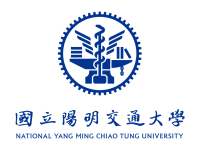Emerging Media for Communicating SDGs
A Symposium Jointly Organized
by
National Yang Ming Chiao Tong University
Shanghai Jiao Tong University
Hong Kong Baptist University
新興媒體與SDGs傳播論壇

Event Dates
Date
March 29 (Fri.) – 30 (Sat.), 2024
Registration
Until March 23, 2024
Conference manual
Program
March 29 (Fri), 2024
| Time | Event | Location |
| 09:30~10:00 | Registration | College of Humanities and Social Sciences (HSS) Bldg 3, Lobby |
| 10:00~10:30 | Opening Ceremony | HSS Bldg 3, HC105【Virtual & On-site】 |
| 10:45~12:00 | Keynote Speech I Topic: The Language of Resilience and Sustainability | HSS Bldg 3, HC105【Virtual & On-site】 |
| 12:00~13:30 | Lunch Break | |
| 13:30~14:30 | ◤Presentation Session 1◥ SDGs: The Roles and Effects of Media
| HSS Bldg 3, HC105【Virtual & On-site】 |
| 14:30~14:45 | Preparation | |
| 14:45~15:45 | ◤Presentation Session 2◥ SDGs: The Responses and Responsibility of Human Beings
| HSS Bldg 3, HC105【Virtual & On-site】 |
| 15:45~16:10 | Tea Break | HSS Bldg 3, Lobby |
| 16:10~17:10 | ◤Presentation Session 3◥ SDGs: The Innovation of Technologies and User Experiences
| HSS Bldg 3, HC105【Virtual & On-site】 |
March 30 (Sat), 2024
| Time | Event | Location |
| 08:30~09:15 | Registration | College of Humanities and Social Sciences (HSS) Bldg 3, Lobby |
| 09:15~10:30 | ◤Presentation Session 4A◥ SDGs and Wellbeing
| HSS Bldg 3, HC103【On-site】 |
◤Presentation Session 4B◥ SDGs and Knowledge Communication
| HSS Bldg 3, HC105【Virtual & On-site】 | |
| 10:30~10:45 | Tea Break | Location: HSS Bldg 3, Lobby |
| 10:45~12:00 | Keynote Speech II Topic: Bridging Divides with Innovation: Human Augmentation Technologies for Social Inclusion | HSS Bldg 3, HC105【Virtual & On-site】 |
| 12:00~13:30 | Lunch Break | |
| 13:30~14:45 | ◤Presentation Session 5◥ SDGs and Digital Information Governance
| HSS Bldg 3, HC105【Virtual & On-site】 |
| 14:45~15:15 | Tea Break | HSS Bldg 3, Lobby |
| 15:15~16:30 | ◤Presentation Session 6◥ SDGs and Human-Computer Interaction
| HSS Bldg 3, HC105【Virtual & On-site】 |
| 16:30 | Closing Ceremony | HSS Bldg 3, HC105【Virtual & On-site】 |
March 29 (Fri), 2024
| 09:30~10:00 |
|
Event
Registration
Location
College of Humanities and Social Sciences (HSS) Bldg 3, Lobby
|
| 10:00~10:30 |
|
Event
Opening Ceremony
Location
HSS Bldg 3, HC105【Virtual & On-site】
|
| 10:45~12:00 |
|
Event
Keynote Speech I
Topic: The Language of Resilience and Sustainability
Speaker: Dr. Patrice BUZZANELL
Distinguished Professor, Department of Communication, University of South Florida
Moderator: Dr. Ran WEI
Associate Dean and Chair Professor, School of Communication, Hong Kong Baptist University
Location
HSS Bldg 3, HC105【Virtual & On-site】
|
| 12:00~13:00 |
|
Lunch Break
|
| 13:30~14:30 |
|
Event
◤Presentation Session 1◥ SDGs: The Roles and Effects of Media
Moderator: Dr. Weiyu ZHANG
Professor, Department of Communications and New Media, National University of Singapore
Location
HSS Bldg 3, HC105【Virtual & On-site】
|
| 14:30~14:45 |
|
Preparation
|
| 14:45~15:45 |
|
Event
◤Presentation Session 2◥ SDGs: The Responses and Responsibility of Human Beings
Moderator: Dr. Ti WEI
Professor, Department of Communication and Technology, National Yang Ming Chiao Tung University
Location
HSS Bldg 3, HC105【Virtual & On-site】
|
| 15:45~16:10 |
|
Tea Break
Location
HSS Bldg 3, Lobby
|
| 16:10~17:10 |
|
Event
◤Presentation Session 3◥ SDGs: The Innovation of Technologies and User Experiences
Moderator: Dr. Chun-Cheng HSU
Professor, Institute of Applied Arts, National Yang Ming Chiao Tung University
Location
HSS Bldg 3, HC105【Virtual & On-site】
|
March 30 (Sat), 2024
| 08:30~09:15 |
|
Event
Registration
Location
College of Humanities and Social Sciences (HSS) Bldg 3, Lobby
|
| 09:15~10:30 |
|
Event
◤Presentation Session 4A◥ SDGs and Wellbeing
Moderator: Dr. Tai-Yee WU
Associate Professor, Institute of Communication Studies, National Yang Ming Chiao Tung University
Location
HSS Bldg 3, HC103【On-site】
|
|
Event
◤Presentation Session 4B◥ SDGs and Knowledge Communication
Moderator: Dr. Leanne CHANG
Associate Professor, Department of Communication Studies, Hong Kong Baptist University
Location
HSS Bldg 3, HC105【Virtual & On-site】
|
| 10:30~10:45 |
|
Tea Break
Location
HSS Bldg 3, Lobby
|
| 10:45~12:00 |
|
Event
Keynote Speech II
Topic: Bridging Divides with Innovation: Human Augmentation Technologies for Social Inclusion
Speeker: Dr. Kouta Minamizawa
Professor, Graduate School of Media Design, Keio University
Moderator: Dr. Liwei CHAN
Professor, Department of Computer Science, National Yang Ming Chiao Tung University
Location
HSS Bldg 3, HC105【Virtual & On-site】
|
| 12:00~13:30 |
|
Lunch Break
|
| 13:30~14:45 |
|
Event
◤Presentation Session 5◥ SDGs and Digital Information Governance
Moderator: Dr. Liangwen KUO
Distinguished Professor, School of Media and Communication, Shanghai Jiao Tong University
Location
HSS Bldg 3, HC105【Virtual & On-site】
|
| 14:45~15:15 |
|
Tea Break
Location
HSS Bldg 3, Lobby
|
| 15:15~16:30 |
|
Event
◤Presentation Session 6◥ SDGs and Human-Computer Interaction
Moderator: Dr. Shih-Yu LO
Associate Professor, Institute of Communication Studies, National Yang Ming Chiao Tung University
Location
HSS Bldg 3, HC105【Virtual & On-site】
|
| 16:30 |
|
Closing Ceremony
Location
HSS Bldg 3, HC105【Virtual & On-site】
|
Introduction
Background
In order to promote academic exchange in the field of communication across the Taiwan Strait and other regions, the Institute of Communication Studies at National Yang Ming Chiao Tung University collaborates with the School of Media and Communication at Shanghai Jiao Tong University and the School of Communication at Hong Kong Baptist University on this endeavor. The collaboration spans three years, with each university taking turns hosting seminars to provide a platform for teachers, students and experts to present research findings and enhance opportunities for exchange. The event also invites external submissions of papers, aiming to improve the quality through a review mechanism, making the conference more diverse and fostering knowledge exchange. The forum will also feature keynote speeches by well-known scholars to enhance participants’ international perspectives and enrich the dialogue and learning between “scholarship” and “practice.” The goal is to bring together scholars, experts, and researchers from different fields to share and exchange research findings, with the hope that the content of the event will respond to societal needs, and facilitate the circulation and application of relevant knowledge for societal improvement and development.
Conference Theme
This symposium aims to pioneer the organization of international academic symposiums in the field of communication, jointly hosted by prestigious institutions from Taiwan, China, and Hong Kong. The theme in 2024 centers around “Emerging Media for Communicating SDGs” (Sustainable Development Goals), aligning with the focal points of global sectors and the concerns of international universities.
SDGs
Since the establishment of the United Nations’ “The 2030 Agenda for Sustainable Development” in 2015, Sustainable Development Goals (SDGs) with 17 core objectives and five major categories have gained increasing attention internationally, guiding policies and actions worldwide. These five major categories focus on fundamental human dignity and well-being, sustainable production and consumption of Earth’s environmental resources, prosperity for humanity and nature, peace and justice in society, and global partnerships. The 17 goals include:
(1)Eliminate Poverty; (2) Erase Hunger; (3)Establish Good Health and Well-Being; (4) Provide Quality Education; (5) Enforce Gender Equality; (6) Improve Clean Water and Sanitation; (7) Grow Affordable and Clean Energy; (8) Create Decent Work and Economic Growth; (9) Increase Industry, Innovation, and Infrastructure; (10)Reduce Inequality; (11) Mobilize Sustainable Cities and Communities; (12) Influence Responsible Consumption and Production; (13) Organize Climate Action; (14) Develop Life Below Water; (15) Advance Life On Land; (16) Guarantee Peace, Justice, and Strong Institutions; and (17) Build Partnerships for the Goals.
Given the extensive coverage of the five major categories and 17 core objectives, communication technology, as a medium, is essential for disseminating information and fostering understanding and implementation of SDGs by governments, organizations, and the general public worldwide. In this context, this forum focuses on exploring the roles of emerging media (such as social media, short videos, etc.) and communication technologies (such as artificial intelligence, virtual reality, etc.) in advocating, promoting, and implementing SDGs, as well as the actual or anticipated impacts.

Story of the Key Vision
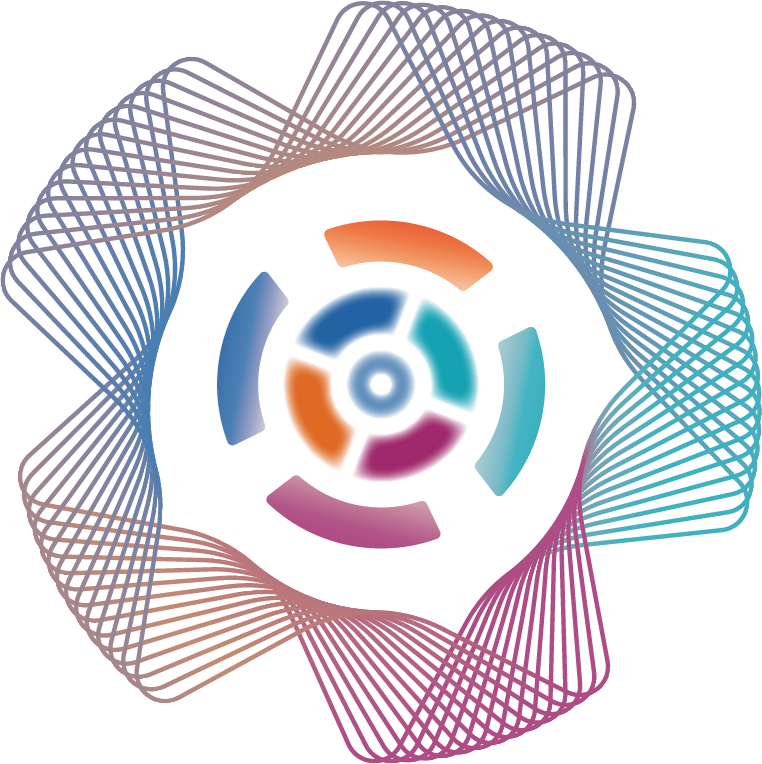
Overall, the windmill-structure key version is designed with the concept of green energy, featuring outer concentric rings, which resemble multiple interwoven Rs, echoing the core concepts of sustainable actions such as Reduce, Reuse, Recycle, etc. The five large rings also symbolize five main categories of the United Nations Sustainable Development Agenda: People, Planet, Prosperity, Peace, and Partnership. The key vision is arranged in concentric circles, symbolizing the need for concerted global cooperation by all humanity to promote sustainability issues. The three rings in the inner circle not only imply multiplicity, but also signify the three universities from both sides of the Taiwan Strait that initiated this event, namely National Yang Ming Chiao Tung University, Shanghai Jiao Tong University, and Hong Kong Baptist University. The four radial lines divide the concentric circles into 17 areas from the center of the graphic, symbolizing the three colleges as well as one institution planning and hosting this forum, which include the Institute of Communication Studies of the College of Humanities and Social Sciences at NYCU, the School of Media and Communication at SJTU, and the School of Communication at HKBU. We also hope to integrate new media and new technologies to jointly promote the 17 goals set by the United Nations. Last but not least, the axis within the windmill represents that everyone can make an effort to turn it around and implement the SDGs. With determination, everyone can step by step promote and fulfill the SDGs!
Organizers
- Institute of Communication Studies, College of Humanities and Social Sciences, National Yang Ming Chiao Tung University
- School of Media and Communication, Shanghai Jiao Tong University
- School of Communication, Hong Kong Baptist University
Keynote
Keynote Speakers
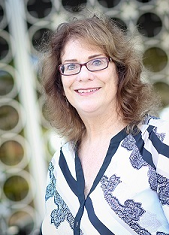
Dr. PATRICE
BUZZANELL
Distinguished Professor, Department of Communication, University of South Florida
Dr. Buzzanell is a former president and fellow of the International Communication Association (ICA), with expertise in organizational communication, resilience, gender, and engineering design. She has an extensive publication record in these fields, including four edited books and over 300 journal articles, book chapters, and conference papers. She has served as the director of the Communication Department at the University of South Florida and as a visiting professor at the School of Media and Design at Shanghai Jiao Tong University.
Professor Buzzanell has received numerous academic and service awards from organizations such as ICA and the National Communication Association (NCA). She has also served as the editor of the internationally renowned journal Management Communication Quarterly and has contributed to the editing of several special issues on topics such as resilience communication, sustainable development, and gender equality and leadership. Currently, she serves on the editorial boards of 20 committees.
Professor Buzzanell has delivered keynote speeches in various countries, including the United Kingdom, the United States, Japan, China, India, Denmark, Brazil, and Malaysia. Her expertise in resilience communication, sustainability, and engineering design aligns well with the focus of this symposium. Her rich academic career and international experiences will provide participants with valuable insights and perspectives.

Dr. KOUTA
MINAMIZAWA
Professor, Keio University, Graduate School of Media Design
Dr. Minamizawa holds a Ph.D. in Information Technology from the University of Tokyo, specializing in haptic and embodied media research, virtual and augmented reality, and human-computer interaction design. Since joining the Keio University Graduate School of Media Design, Dr. Minamizawa has undertaken various projects related to haptic media, delving into the utilization of digital technology to convey, enhance, and create human experiences, with applications in social development.
He is actively involved in promoting activities related to sensory design and has led the university’s advanced smart robot development project. His research expertise aligns well with the future technologies to be discussed at this symposium. In this symposium, we hope Professor Minamizawa can share his latest research findings, and anticipate substantial benefits and inspirations for students and faculty in the fields of humanities, social sciences, and computer science related to HCI. This collaboration aims to facilitate interdisciplinary dialogue, broaden participants’ perspectives, and enhance awareness of the applications of emerging technologies.
Moderators
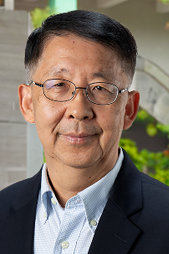
DR. RAN WEI
Associate Dean (Research and Development) and Chair Professor, Department of Communication Studies, Hong Kong Baptist University
Dr. Wei is a Fellow of the International Communication Association. He has held positions as Chair Professor at the School of Journalism and Communication at the Chinese University of Hong Kong, Visiting Chair Professor at the Institute of Communication Studies at National Yang Ming Chiao Tung University, and the Gonzales Brothers Professor of Journalism at the School of Journalism and Mass Communication at the University of South Carolina. Additionally, he served as the Editor-in-Chief of the internationally renowned journal Mass Communication and Society from 2014 to 2016.
Professor Wei’s research expertise spans media effects, communication technologies, and he is also a trailblazer in mobile communication research. He has contributed significantly to this area, including a notable retrospective work titled “Mobile communication research in 15 top-tier journals, 2006–2020: An updated review of trends, advances, and characteristics,” published in Mobile Media & Communication in 2022. Furthermore, he has edited books entitled “Mobile media and civic Activism: Asian cases, experiences, and theories,” which was published by Springer in English and by the Global Citizenship Education Center at National Chiao Tung University in Chinese.
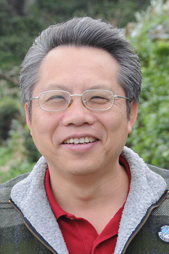
DR. LIANGWEN KUO
Distinguished Professor, School of Media and Communication, Shanghai Jiao Tong University
Dr. Guo’s main professional experiences include serving as the Dean of the College of Humanities and Social Sciences, the Director of the Institute of Communication Studies, and the founding Director of the Global Citizenship Education Center at National Chiao Tung University. His research expertise lies in the areas of Internet society and new media communication, ethnic media studies, and digital preservation of minority cultural heritage. Some of the projects he has undertaken include “The History of Cultural Communication of the Dawu Tribal Songs in Taiwan,” “Digital Archiving of Intangible Cultural Heritage in China,” and “Establishment of a Smart Creative Platform and Global Communication.”
In recent years, Professor Guo has also participated in editing books such as “Communication Research methods: Quantitative, qualitative, and big data analysis,” “Media literacy in the age of new communication technologies: Be a smart audience,” and “Exchange and development of communication and media across the Taiwan Strait: A historical investigation in the early 21st century.“
Call for Papers
Submission
I.Important Dates
- Submission: December 15 (Fri), 2023 to February 3 (Sat), 2024
- Online Acceptance Announcement: March 1 (Fri), 2024
- Individual Notification of Acceptance: March 1 (Fri) to March 5 (Tue) , 2024
- Event Dates: March 29 – 30 (Fri and Sat), 2024
- Event Venue: Yang Ming Chiao Tung University, Guangfu Campus, College of Humanities and Social Sciences Building 3 (No. 1001, University Road, East District, Hsinchu City, Taiwan)
- Organizers: Institute of Communication Studies, National Yang Ming Chiao Tung University; School of Media and Communication, Shanghai Jiao Tong University; School of Communication, Hong Kong Baptist University
II.Background
In order to promote academic exchange in the field of communication across the Taiwan Strait and other regions, the Institute of Communication Studies at National Yang Ming Chiao Tung University collaborates with the School of Media and Communication at Shanghai Jiao Tong University and the School of Communication at Hong Kong Baptist University on this endeavor. The collaboration spans three years, with each university taking turns hosting seminars to provide a platform for teachers and students to present research findings and enhance opportunities for exchange. The event also invites external submissions of papers, aiming to improve the quality through a review mechanism, making the conference more diverse and fostering knowledge exchange. The forum will also feature keynote speeches by international scholars to enhance participants’ international perspectives and enrich the dialogue and learning between “scholarship” and “practice.” The goal is to bring together scholars, experts, and researchers from different fields to share and exchange research findings, with the hope that the content of the event will respond to societal needs, and facilitate the circulation and application of relevant knowledge for societal improvement and development.
III. Conference Theme
Since the establishment of the United Nations’ “2030 Agenda for Sustainable Development” in 2015, Sustainable Development Goals (SDGs) with 17 core objectives and five major categories have gained increasing attention internationally, guiding policies and actions worldwide. These five major categories focus on fundamental human dignity and well-being, sustainable production and consumption of Earth’s environmental resources, prosperity for both humanity and nature, peace and justice in society, and global partnerships. The 17 goals include:
(1)Eliminate Poverty; (2) Erase Hunger; (3)Establish Good Health and Well-Being; (4) Provide Quality Education; (5) Enforce Gender Equality; (6) Improve Clean Water and Sanitation; (7) Grow Affordable and Clean Energy; (8) Create Decent Work and Economic Growth; (9) Increase Industry, Innovation, and Infrastructure; (10)Reduce Inequality; (11) Mobilize Sustainable Cities and Communities; (12) Influence Responsible Consumption and Production; (13) Organize Climate Action; (14) Develop Life Below Water; (15) Advance Life On Land; (16) Guarantee Peace, Justice, and Strong Institutions; and (17) Build Partnerships for the Goals.
Given the extensive coverage of the five major categories and 17 core objectives, communication technology, as a medium, is essential for disseminating information and fostering understanding and implementation of SDGs by governments, organizations, and the general public worldwide. In this context, this forum focuses on exploring the roles of emerging media (such as social media, short videos, etc.) and communication technologies (such as artificial intelligence, virtual reality, etc.) in advocating, promoting, and implementing SDGs, as well as the actual or anticipated impacts.
Submitted papers should combine the focus on emerging media and SDGs, exploring the applications of emerging media and new communication technologies in one or more SDGs. Suggested directions include (but not limited to):
- How emerging media and new communication technologies reflect and represent the current state of SDGs at the individual or societal level;
- How emerging media and new communication technologies influence the knowledge and implementation of SDGs at the individual or societal level;
- How governments, businesses, or organizations design and use emerging media and new communication technologies to promote SDGs;
- Other issued related to emerging media, new communication technologies, and SDGs.
IV. Manuscript Guidelines
- Only full-length paper submissions will be considered for acceptance.
- Papers must be original and have not been accepted or published by other academic conferences or journals.
- Language: Chinese (Traditional or Simplified) or English.
- Word count: Chinese full text should be within 15,000 words (including references and appendices); English full text should be within 9,000 words (including references and appendices).
- Format: For Chinese submissions, please refer to the format of the journal, Communication and Society; for English submissions, please refer to the APA 7th
- File format: Submissions should be in PDF format.
- On the first page of the full manuscript, please provide the Chinese title, a Chinese abstract within 400 words, and up to 6 keywords. On the second page, please provide the English title, an English abstract within 150 words, and up to 6 keywords. The word count for these pages is not included in the overall word count.
V.Submission Information
- Submission period: December 15 (Fri), 2023 to February 3 (Sat), 2024.
- All submissions must be made online. Please submit your paper via the website: https://emcsdgs.conf.nycu.edu.tw/
- Prior to submission, please register or log in as a member at the designated login/register section on the website, and then proceed to the submission area.
- For full paper submissions, it is essential to upload an “anonymous” full-text document. This means removing any information about the authors from the submitted paper file.
- The submission process is considered complete only after a confirmation email is sent. If no confirmation is received within one week, please contact us.
VI.Other Information
- This event is free of registration fees.
- For any submission-related inquiries, please contact Ms. Wan-Lin Sun at emcsdgs@gmail.com.
Submission System Quick Guide (PDF File)
2024 EMCSDGs Call for Papers Instructions (PDF File)
Download
Location
Event Venue
National Yang Ming Chiao Tung University, Guangfu Campus, College of Humanities and Social Sciences Building 3 (No. 1001, University Road, East District, Hsinchu City)
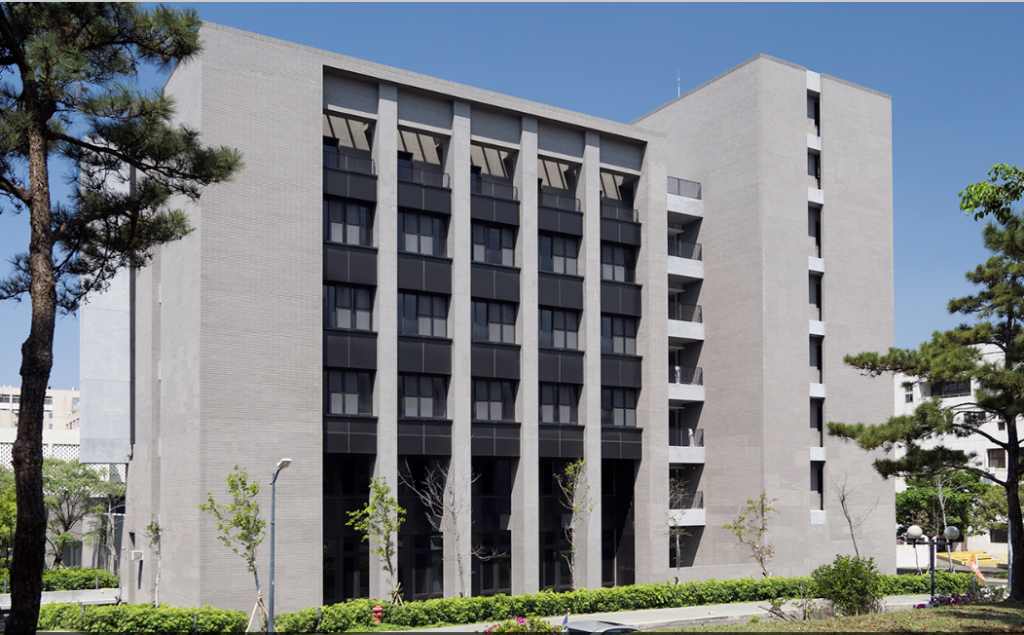

Transportation
Driving
(a) From the south: Exit at Hsinchu Interchange (94.5K) on National Freeway No. 1. Turn left at the first traffic light towards Guangfu Road, then turn left onto University Road to reach the north gate of the campus.
(b) From the north: Exit at the Science Park Interchange (approximately 97K) on National Freeway No. 1. Turn left onto Park Road 2, drive for about three minutes, then turn left onto Xin’an Road at the end of Park Road 2 to reach the south gate of the campus.
Public Transportation
(a) High-Speed Rail: Take the Taiwan High-Speed Rail to “Hsinchu Station,” then transfer to the university’s Guangfu–Zhubei shuttle or take the “182” Guoguang Bus.
(b) Train: Take the Western Line to “Hsinchu Station,” then transfer to Hsinchu Bus Route 2 to the campus, or take Hsinchu Bus Route 1 to Guogou Station and walk along University Road to the campus.
(c) Bus: Hsinchu Bus Route 2 to the campus. Take Hsinchu Bus Route 1 to Guogou Station and walk along University Road to the campus.
(d) Intercity Bus: Guoguang Bus, Hsinchu and Sanchung Bus (Taipei Line), Hsinchu and Taichung Bus (Taichung Line), Ho-Hsin Bus, All United Bus (via National Freeway No. 2), Hsinchu Bus (only stops near the Chanku Electronics store on Jincheng 1st Road), Tung-Lien Bus (only stops near the Guangfu Road interchange). Ring the bell to get off at the Hsinchu Interchange and walk about 800 meters along Guangfu Road.
(e) Take the Science Park Shuttle Bus (Red Line).
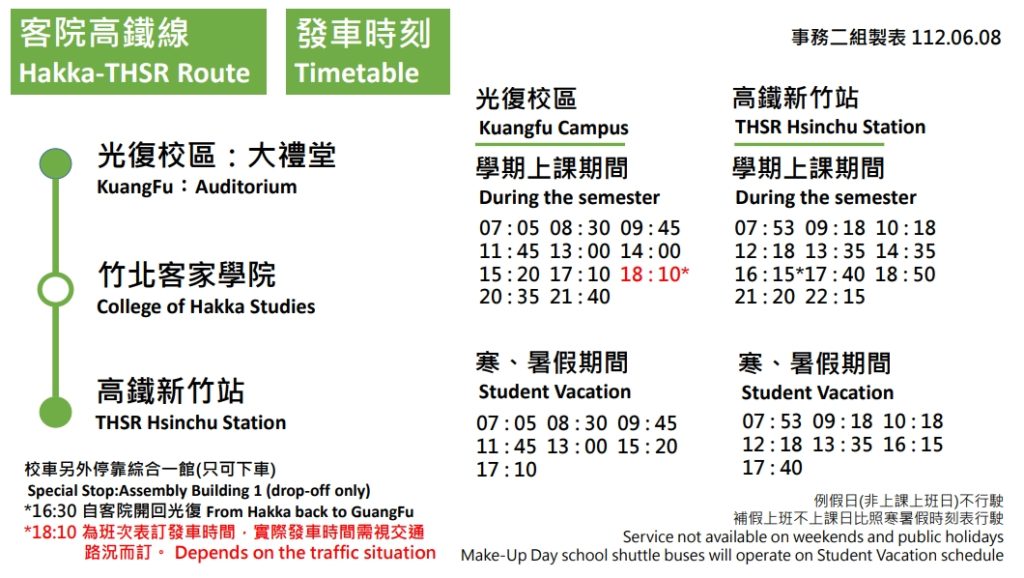

Accommodations
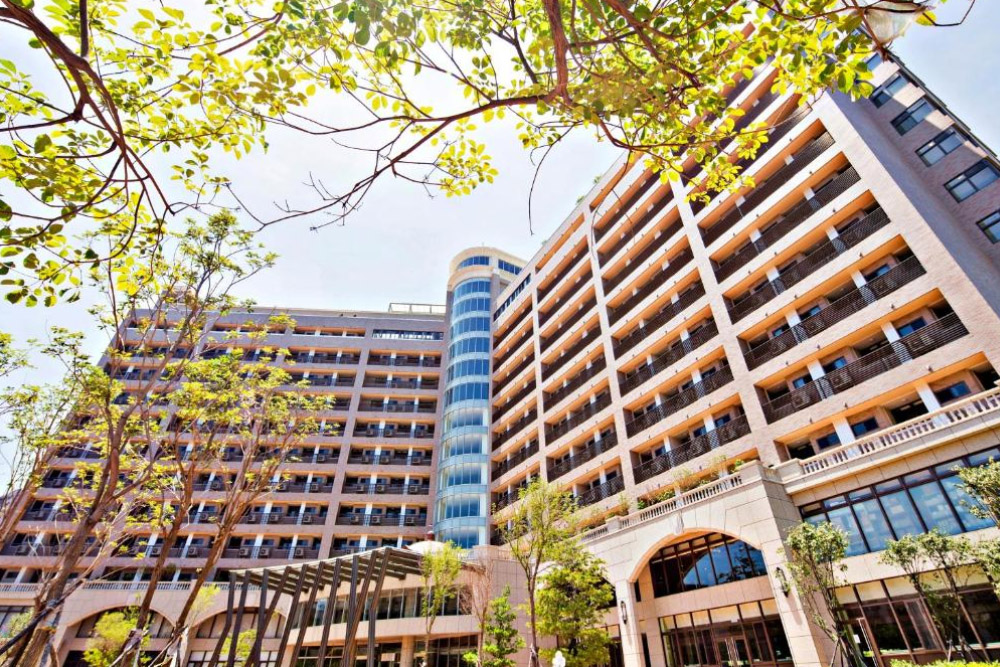
The Ho Hotel
Address: No. 16, University Road, Hsinchu City 300, Taiwan
Phone: 03-571-5888
Official Website:The Ho Hotel
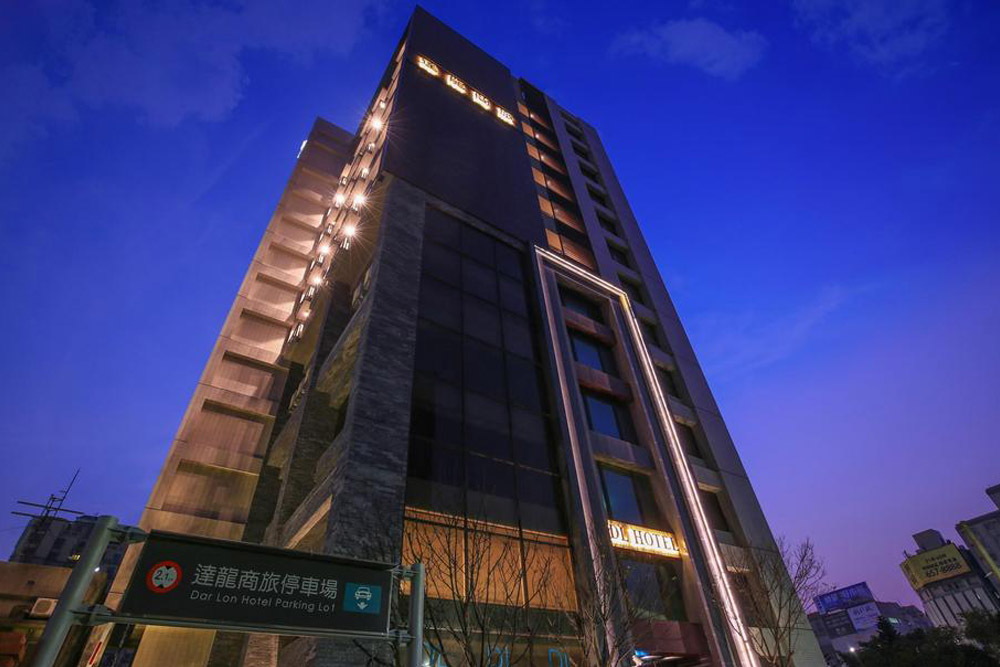
DL Hotel
Address: No. 808, Guangfu Road, Sec. 2, Hsinchu City
Check-in/Parking: No. 7, Dongyuan Street, East District, Hsinchu City 300
Phone: 03-516-6666
Official Website:DL Hotel
Attractions
Hsinchu Old Town
Hsinchu City, the earliest developed city in northern Taiwan, carries a history going back three centuries and has changed over time. Within the narrow streets of the old town, various aspects of old and new coexist. Legend has it that the carp of Guanyin stayed in this place, forming a dragon vein called the “Carp Hole” that runs through the entire old town of Hsinchu. The tail is at the Outer Matsu Temple, the belly is at the Hsinchu City Cheng Huang Temple, and the head is at the Zhulian Temple. Let’s follow the course of the Carp Hole into the old town of Hsinchu, listen to its whispers, touch its contours, hold hands with Little Zhen, and have a date!
“Little Zhen’s Appointment” is a nickname derived from the old name of Hsinchu City, ” Chuchien,” likening the city to a changeable and young girl. Centered around the dragon vein legend of the Carp Hole in Hsinchu City, the story unfolds among old shops and historic sites. In the blend of tradition and innovation, come and have a date with the hundred-year history of “Little Zhen.” (Excerpt from the Tourism Bureau, Ministry of Transportation)
Nanliao Fishing Port, Hsinchu
During holidays, Nanliao Fishing Port in Hsinchu attracts numerous families who come together to enjoy seafood, fly kites, and explore the lively atmosphere. The holiday market in front of the Fisheries Wholesale Center sells colorful kites, snacks from various places, and various nostalgic game booths, adding to the vibrancy of Nanliao Fishing Port. Officially established decades ago, Nanliao Fishing Port covers a vast area of 91 hectares with well-developed public facilities, including comprehensive road transportation and utility infrastructure. In recent years, with the increasing popularity of leisure fishing and sea tourism activities in Taiwan, the city government has planned for an entertainment fishing boat pier and a sports park, making Nanliao Fishing Port a multifunctional destination catering to both leisure fishing and diverse activities.
(Excerpt from Hsinchu City Tourism Website)
Seventeen Kilometer Coastal Line
To create a pleasant leisure space for the citizens of Hsinchu and attract tourists, the Hsinchu City Government has carefully developed the “Seventeen Kilometer Coastal Line.” In recent years, the city government has dedicated efforts to establish a city waterfront area, actively constructing Hsinchu Left Bank, the 17-kilometer Coastal Line, and Hsinchu Fisher’s Wharf. The coastal line has been landscaped, and the Hsinchu South Harbor Scenic Area has been revitalized, connecting the “Smiling Waterfront” and transforming it into a waterfront city.
In recent years, the Hsinchu City Government has continuously improved the Seventeen Kilometer Coastal Line. The completion of the “Seventeen Kilometer Bike Path 2.0” project in 2016 has garnered considerable attention. To provide the public with a more comfortable, flat, and safe environment for walking and cycling, the city government has completed numerous improvements to bike paths, including those in the Gangnan Canal Park, Fengqing Coastal Trail, and Baiyun Bridge Bike Path. Additionally, ecological recreational spaces such as “Family Beach,” “Crab Observation Trail,” “Nangang Birdwatching Area,” “Seventeen Kilometer Nangang Station,” and “Xiangshan Wetland Ecological Park” have been gradually developed.
In 2020, the city government completed the renovation of the “Nanliao Tourism Service Center,” welcoming people from across the country to visit Hsinchu City. Whether biking or strolling, everyone is invited to enjoy the “Unbeatable Sea View.”
(Excerpt from Hsinchu City Tourism Website)
- Address: start from No. 261, Nanliao St., North Dist., Hsinchu City
- Attraction: [Hsinchu City Tourism Website]
Contact Us
Contact person:Wan-Lin Sun E-mail:emcsdgs@gmail.com

